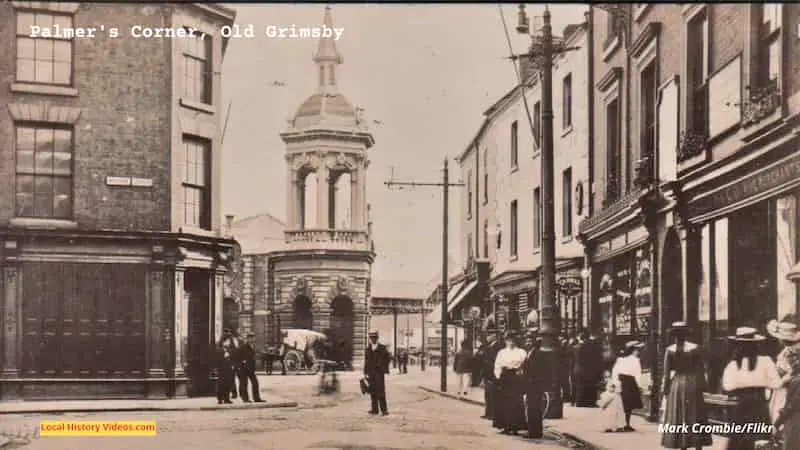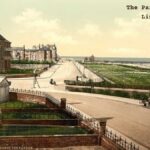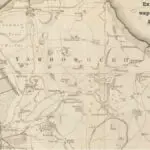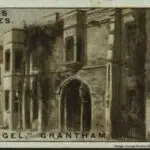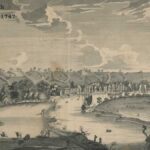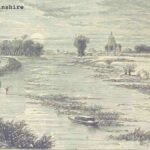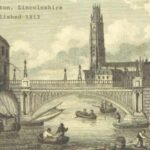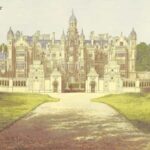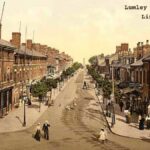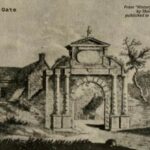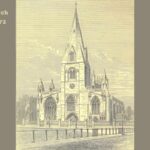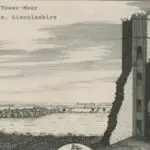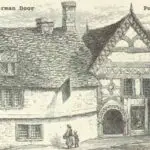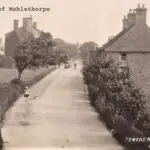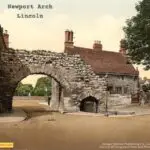Glimpse history through old images of the seaside town of Grimsby, in the east English county of Lincolnshire.
Grimsby Dock Through Time
Grimsby Royal Dock: A Journey Through Time: The Time Travel Artist (YouTube)
Sir David Beatty (1919)
Sir David Beatty became Admiral of the Fleet in 1919. He’d served in the Mahdist War and then the response to the Boxer Rebellion, but commanding the 1st Battlecruiser Squadron at the Battle of Jutland in 1916 made him famous and his visit to Grimsby in 1919 brought a lot of local people out onto the streets.
A number of serious errors have been identified in Beatty’s handling of his squadron at the Battle of Jutland. But the general public during and after the Great War, later known as World War I, would have known nothing of this.
He died in 1936, just months after he’d acted as pallbearer for his friend Admiral John Jellicoe despite suffering from heart failure and influenza, for which a bystander sent a glass of brandy out to him as the funeral procession passed up Fleet Street in London.
Sir David Beatty visits Grimsby (1919) – British Pathé on YouTube
Alexandra Dock Bridge (1928)
In 1928, the Prince of Wales officially opened Grimsby’s Alexandra Dock Bridge.
This is the royal crowned as Edward VIII in 1936, who resigned the same year over his relationship with Mrs Wallis Simpson, and became known as the Duke of Windsor.
ROYAL: Prince of Wales at Grimsby opening Alexandra Dock bridge (1928) – British Pathé on YouTube
There’s a second piece of silent footage of the Prince of Wales, this time on a large boat, which ends by sailing past the Alexandra Dock bridge.
Our Skipper Prince (1928) – British Pathé on YouTube
New Fish Dock (1934)
Sir Henry Betterton, Chairman of the Unemployment Board, started the 1934 ceremony of the opening of Grimsby’s new Fish Dock. It had taken 4 years to build, at a cost of almost £1.75m.
Grimsby’s Trade Stimulant (1934) – British Pathé on YouTube
Secondary Modern School (1959)
For five years during the 1950s, pupils at the Chemsford Avenue Secondary Modern School in Grimsby built a ‘Roman style’ open air theatre for 2,000 spectators.
English and Drama teacher Colin Laycock, and Headteacher Mr Kingsland, oversaw a project which included fencing; making cement moulds; cementing balustrades; fixing stage lights; painting; gardening; building a lily pond and fountain.
The boys borrowed picks, shovels, and other euipment from home. Needless to say, there is a complete absence of safety gear, not even a pair of gloves.
In addition to school time, the boys also spend weekends and evenings helping with the project.
At the end of the project, some of the boys are filmed rehearsing a scene from Julius Caesar.
It’s an interesting look at some alternative approaches to education for those ‘less academic’ pupils who didn’t pass the 11+. For all we still hear a lot of discussion about Grammar Schools, most pupils attended their local Secondary Modern school. One relative, who has read hundreds of academic books over the years for his own interest, told me he spent a lot of time at his Secondary Modern building a cricket pavilion instead of being educated, prompting him to leave for factory work at the age of 14.
It’s also interesting to hear the narrator’s comment about theatres being torn down for office blocks.
School Open Air Theatre (1959) – British Pathé (YouTube)
Pea Harvest (1968)
A 1968 newsreel records the 24 hour harvesting and freezing process of freshly picked peas. This is now a routine product which most British homes buy on a regular basis, but in 1968 it was all very new.
Operation Pea Harvest (1968) – British Pathé on YouTube
More about Lincolnshire
- Old Images of Lincolnshire, England
- Old Images of Louth, Lincolnshire
- Old Images of Immingham, Lincolnshire
- Old Images of Grantham, Lincolnshire
- Old Images of Gainsborough, Lincolnshire
- Old Images of Crowland, Lincolnshire
- Old Images of Boston, Lincolnshire
- Old Images of Scunthorpe, Lincolnshire
- Old Images of Harlaxton Manor, Lincolnshire
- Old Images of Spalding, Lincolnshire
- Old Images of Skegness, Lincolnshire
- Old Images of Scampton, Lincolnshire
- Old images of Cranwell, Lincolnshire
- Old Images of Sleaford, Lincolnshire
- Old Images of Horncastle, Lincolnshire
- Old Images of Stamford, Lincolnshire
- Old images of Keadby Bridge, Lincolnshire
- Old Images of Mablethorpe, Lincolnshire
- History in Old Images of Lincoln, UK
- Old Images of Ruskington, Lincolnshire

